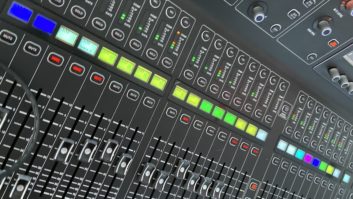
By now, you’ve no doubt heard about the tragic events earlier this month at Travis Scott’s Astroworld Festival concert in Houston, Texas. The death toll crept up to 10 this week when nine-year-old Ezra Blount succumbed to injuries sustained as a result of being trampled at the festival. Dozens more were injured when the sold-out crowd of 50,000 surged toward the stage during Scott’s performance.
It’s disturbing enough that 10 concertgoers died attending an event that was supposed to be fun. What’s more disturbing is that there were clear warning signs that such a tragedy could take place: at Astroworld 2019, three people were injured when barriers outside the main entrance collapsed as a result of fans rushing the entrance (Astroworld 2020 was canceled due to Covid-19).
It’s sad to say that this is not the first time our industry has experienced such mishaps: Roskilde, Denmark 2000. Love Parade, Duisburg, Germany 2010, and perhaps the most infamous, the Who, Cincinnati, Ohio, 1979.
Mix Live Blog: (Not) Everybody’s Working for The Weekend
Mix Live Blog: Get Back Inside!
On December 3 of that year, the Who performed at the Riverfront Coliseum to a sellout crowd of more than 18,000 people. Earlier in the day, a local radio station announced that doors would open at 3:00 p.m. to people with GA (general admission) tickets. By 5:00 p.m., doors still hadn’t opened to the massing crowd, and by 7:30 p.m., patrons were getting restless. They began to hear music coming from inside the venue and thought that the show had started. Whether the music they heard was a soundcheck or simply Who music being played over the P.A. system was never made clear.
The building planned to open all doors simultaneously, but only one set was actually opened, causing a rush toward that area of the venue. The results were deadly: 11 people were trampled to death. The Who were not informed of what happened until after the show had ended.
Why is that? Was it because the news would have ruined the performer’s vibe for the show? Was it because the authorities didn’t want the band to cancel and cause a riot? Or was it because the promoter didn’t want to stop the show because of the financial liability? Call me cynical, but I think it’s the latter.
Reports are that Travis Scott — like the Who — was not aware of what was happening during the show, and that’s a distinct possibility. Anyone who’s worked an event of such scale knows that it can be hard to tell what’s going on in the audience—especially when it’s a nighttime event. It’s possible that had Scott been informed, he might have been able to control the crowd, but at this point speculation is irrelevant.
What we do know for sure is the following:
- 10 people lost their lives attending a concert.
- Event security was unprepared for the event.
- The show ended early, but was not stopped.
- A criminal investigation has been opened.
- There will be a mess of litigation regarding who ultimately has the responsibility for the unfortunate deaths of the concertgoers.
- 42 years after the Who incident in Cincinnati, general admission is still a bad idea for large events.
- The concert industry failed at Rule Number One: ensure the safety of patrons.
- Only nine years old, Ezra Blount never had the chance to live.







